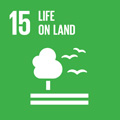- Docente: Alessandro Piras
- Credits: 6
- SSD: M-EDF/01
- Language: Italian
- Teaching Mode: Traditional lectures
- Campus: Bologna
- Corso: Second cycle degree programme (LM) in Wellness and Sport Management (cod. 9214)
-
from Oct 11, 2024 to Nov 29, 2024
Learning outcomes
At the end of the course the student:
- have an in-depth knowledge of the different types of training aimed at seeking physical efficiency and health; - will be able to apply methods, tools and equipment for the different types of people who attend a fitness center; - knows the intervention policies on physical exercise for health; - will be able to independently set up a bibliographic search and select the training protocols necessary for that particular case (musical fitness; proprioceptive gymnastics; postural gymnastics; cardiofitness training; etc ..).
Course contents
MODULE 1
- Intervention policies: Difference between a sedentary lifestyle and an active lifestyle; WHO guidelines on physical activity; The Toronto Charter; European projects against the sedentary lifestyle: the role of Erasmus plus sport, characteristics and method of action; National intervention projects on physical exercise; Regional Prevention Plan of Emilia Romagna
- From the ethical gym to the safe one: The role of the graduate in physical education; Primary prevention and secondary prevention; The role of adapted physical activity (AFA) on pathology; The role of adapted physical exercise (EFA) on pathology
- The Medical Fitness center: The role of the kinesiologist; New development opportunity; New targets and new strategies; Professionalism and quality; Prices and tariffs; The functional gym model, support services, promotion and marketing
MODULE 2
- Fitness center management: The globalization of fitness, historical and cultural transformation of fitness; Fitness for health and fitness for aesthetics; The importance of loyalty; The types of subscription; Quality at the service of the customer / partner: the role of the personal trainer and that of the dining room assistant; The cardio-fitness room; The training room
- Fashions and trends in fitness centers: The fundamental components of physical exercise; Analysis of the activities included in the top positions drawn up by the ACSM;
- Physical activity outdoors: Concept of green gym; Physical exercise in parks: psychic, social, environmental benefits; Characteristics of the parks: tools, accesses; The effects of the "blue gym"; Outdoor physical activity: types and effects on health
- Remote physical activity: Telemonitoring of physical exercise: the set of computer and exercise techniques that make it possible to provide remote services; Virtual reality as a tool for physical exercise and sport; Exergame for health and fitness: the roles of GPS and geosocial apps
- Wearable Technologies and their use in fitness: Types of Wearable Technologies and factors that have influenced their growth in recent years.
Readings/Bibliography
- Lessons take place with the help of slides that are made available to students for further information.
- Insights with the help of scientific articles
Teaching methods
- The course corresponds to 40 hours of frontal lessons.
Assessment methods
- The exam will consist of a practical part and a written exam.
- The practical part will done with students subdivided in different groups, a project will be chosen among those proposed by the teacher, developed by the students and presented in class. More information will be given during the lessons.
- The written exam can be carried out only after obtaining the vote of the practice, and will consist of 30 multiple choice questions (+1 correct answer; -0.3 incorrect answer; 0 answer not given) on the topics covered in class. The test time will be 30 minutes.
- The final grade will be the average of the two grades. The student who obtains 30/30 in both tests will have a final grade of 30/30 cum laude.
Teaching tools
- Teaching will take place through lectures, with the help of power point presentations (which will be made available to students).
- The teaching material presented in class will be made available to the student in electronic format (virtual.unibo.it).
Office hours
See the website of Alessandro Piras
SDGs




This teaching activity contributes to the achievement of the Sustainable Development Goals of the UN 2030 Agenda.
